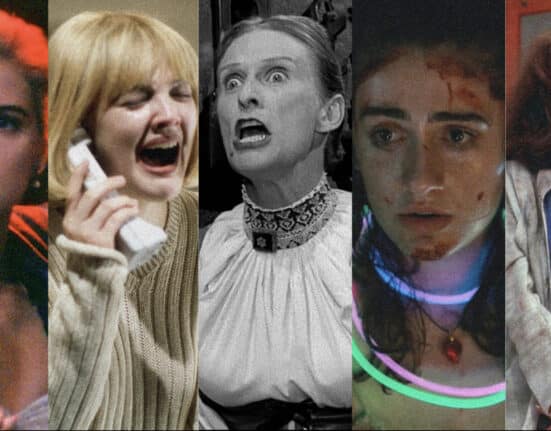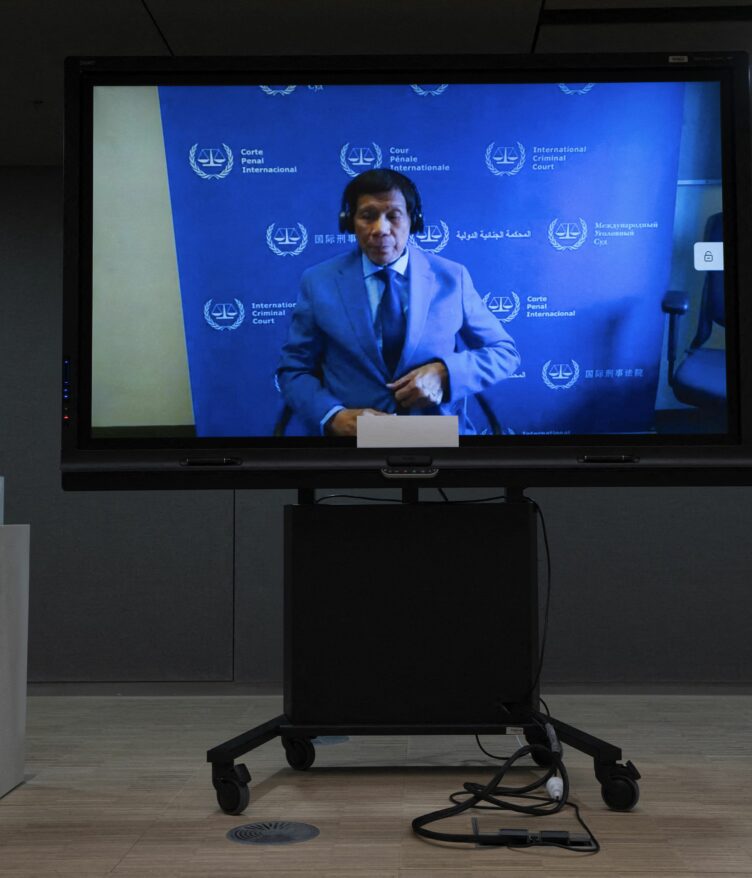WARNING: Contains spoilers
CARS dying in the middle of nowhere, women tripping on nothing as they run away from the villain, and phones suddenly losing reception when the killer is near. If you’re a fan of horror or thriller movies, you’ve definitely encountered these cliches at least once in your life.
Parody, spoof and satire films soon grew in popularity during the 1970s as people started to grow tired of seeing the same tropes, stereotypes, and cliches played out in every movie–in horror films, especially.
To break free from the mold set forth before them, directors like Wes Craven and Michael Lehmann felt that they could do more with the tools they’d already been given. The 80s and 90s then proved to be a great year for satirical takes on horror and genre thrillers, and their influence can be seen even in films that are released in the present.
Here are some films that make satire out of their present genre, starting from 1974 and going all the way to 2022.
- Young Frankenstein (1974)
Arguably the parody that made parodies grow in popularity, Young Frankenstein takes the classic story of Frankenstein and turns it into one of the best comedy-slash-horror films that’s still hilarious to this day.
A stark contrast from the original 1931 film and the novel by Mary Shelley, Young Frankenstein is a film that knows how to have fun. There isFrankenstein doing a musical number with his monster, Frankenstein’s fiancee falling for the monster because of his–and we quote–”enormous Schwanzstucker,” and of course the iconic “Do not open this door” scene that never fails to get a chuckle from viewers.
In this scene, Frankenstein gives a long, heroic speech to his staff about how he is to confront his monster, and how under no circumstances should they open the door to let him out. He even says that he is willing to do whatever it takes, even if it costs him his life. But as soon as he enters the room and sees the monster, his facade of bravery melts away entirely.
Immediately, he shouts: “Let me out of here, get me the hell out of here. What’s the matter with you people, I was joking! Don’t you know a joke when you hear one!”
This film pokes fun at all the horror cliches and then subverts them for comedic effect: the main character is a coward in disguise, and the love interest ends up with the film’s supposed villain and the supposed dumb blonde who’s actually much smarter than she looks.
At the same time, Mel Brooks doesn’t forget to include cinematic aspects that made the film so beautiful. He keeps it black and white even though movies were already being shown in color at the time, and the world within the film is built so beautifully that viewers would not be able to tell immediately that it was for a parody film.
Yes, it’s funny, but it’s also absolutely beautiful. From the composition of the shots to the way the lighting hits each character’s face, there’s time to both laugh and admire the beauty in Brooks’ filmmaking technique.
- Heathers (1988)
Aimed to be a dark comedy-slash-thriller film that makes a satire of high school flicks, Heathers follows a young girl named Veronica Sawyer who joins a group of girls called The Heathers to finally get out of being relentlessly bullied by her peers at school. Soon, she meets a young homicidal boy named Jason Dean (JD), who starts killing off her classmates one by one.
What is commendable about the movie is practically every character is humanized. For example, there are two characters named Kurt and Ram. They’re first portrayed as your typical dumb jocks seen in every other high school flick; they bully others and force themselves on girls, and in the end, they’re killed by Veronica and JD for these same reasons.
But at the funeral of the two boys, viewers see Veronica and JD laughing despite having just killed two people; Veronica shuts up almost immediately when she sees a young girl in the front pew wearing the jacket of one of the boys, tears in her eyes. She realizes that these boys had family and that that young girl would never see her older brother again.
The director also humanizes the mean girls of the story, The Heathers. Heather Chandler holds onto her power by pleasuring men even when she doesn’t want to. Heather Duke becomes a “bitch” because she has spent her entire life living in Heather Chandler’s shadow. Heather McNamara only allows herself to be a mean girl because she is scared to do anything that goes against the status quo.
Even the villain, JD, is shown to be the way that he is because of the trauma he’s had to deal with from his mother and father. This film ditches forgettable one-dimensional characters and makes sure that the audience can connect with each one of them, no matter how “evil” they may at first seem.
SUGGESTED STORIES:
Three killed as major quake strikes southern Philippines
Mati, Philippines: A powerful magnitude-7.4 earthquake struck off the southern.
ICC rejects release bid from ex-Philippines president Duterte
The Hague, Netherlands: Former Philippines president Rodrigo Duterte will remain.
Major quake strikes off southern Philippines
Davao, Philippines: A powerful magnitude-7.4 earthquake struck off the southern.
- Buffy the Vampire Slayer (1992)
This film is where the iconic TV series all started. Directed by Joss Whedon–yes, the same guy that made the Avengers come to life–Buffy the Vampire Slayer makes fun of the “dumb blonde girl” trope by creating Buffy Summers. Played by Kristy Swanson, Buffy is a young cheerleader who wants to focus on the school dance instead of killing the vampires that are starting to swarm her town.
But when she’s called to take her place as a vampire slayer when a powerful vampire named Lothos plans to take over the world, she has no choice but to pull up a stake.
Buffy is painted to be your average teenage girl: she’s the captain of the cheerleading team, she spends her free time shopping, and she likes to gossip with her girlfriends and talk about boys. But this film doesn’t make fun of that. It doesn’t try to teach viewers that Buffy is a strong badass despite her “girliness;” viewers are taught that she is as strong as she is because of it.
In one scene towards the end, Buffy’s love interest Pike tells her, “You’re not like other girls.”
And with her head held high, Buffy responds: “Yes, I am.”
Throughout the film, Buffy learns to defend both herself and everyone else around her; at the school dance, she saves the entire student body without falling into the “damsel in distress” cliche. With this film, Whedon fulfilled his goal of proving that cute girls can do more than just get killed off in horror movies.
- Scream (1996)
Perhaps the most popular film that’s become known as a satire of the entire horror genre, Scream follows a young high school student named Sidney Prescott, who grows paranoid as more and more people are murdered in her small town. As the murders start to hit closer to home, Sidney starts to feel like she can’t trust anyone–not even her boyfriend.
The entire point of this franchise is to make fun of horror movie cliches but, at the same time, still, incorporate them into the plot in manners that are more entertaining to watch than tiring.
Yes, this film harbors a ton of cliches: running up the stairs instead of going out of the house when the killer is chasing you, having a surprise twist regarding the villain’s identity towards the end, and the villain faking his death and then jumping back up for a last-minute jumpscare.
But what people love about this film is that it’s aware of the tropes that it plays into, and it doesn’t care. There’s even a scene wherein one of the characters, Randy, discusses everything you should do to avoid a killer based on all the horror movies he’s watched in the past:
“You can never have sex. Big no-no. Sex equals death, okay?”
“Number two: You can never drink, or do drugs. The sin factor–it’s a sin. It’s an extension of number one.”
“Number three: never, ever, ever, under any circumstances, say “I’ll be right back.” Because you won’t be back.”
But people do drink in the movie, and Sidney does have sex later on. Even mere seconds after Randy’s rule speech, we hear another character say “I’ll be right back!”
What makes Scream different is that it’s aware of its cliches, incorporating these into the story in ways that are new and exciting. Even if there are cliches present, the audience still finds that there are twists and turns in the plot. The reveals are still surprising, and the gasps ripped out of viewers’ throats are genuine. That’s why Scream, despite all its “flaws,” works.
- Bodies Bodies Bodies (2022)
A24’s Bodies Bodies Bodies is a great example of the saying “It’s so bad that it’s good.”
The film revolves around a group of teenagers who spend a few days at their friend David’s house because of an oncoming storm. When they suddenly find David dead outside the mansion, the group of friends quickly start turning their backs on one another, no longer knowing who they can trust.
This film is a satire that pokes fun at Gen Zs; viewers hear the terms “gaslight” and “trigger” and “toxic” and know instantly that it’s meant to be set in the modern day and age. While the film does have some horror cliches sprinkled in every once in a while, what director Halina Reijn has been able to do here is make almost every single character one that parodies their entire generation.
What some find unique about this film is that towards the end, there isn’t really anyone that viewers will want to root for. Almost all the characters in the movie–except maybe Lee Pace, who’s in this for some reason–are self-obsessed and self-serving. They all act so passive-aggressively towards one another, and toward the end of the film viewers will feel as if no one on-screen actually likes each other, which makes it all the more difficult to figure out who exactly the killer is.
It feels like the opposite of Heathers, in that the more one gets to know a character, the less one wants to root for them, which is something seldom seen in horror movies.
Brandon Yu writes that the film is a great parody of the Gen Z age” “Real death ensues and a slasher is on the loose, but the horror at the heart of the film is less about bloodlust, and more about each other: the hidden tea, the buried grudges.”
The best part about this film that truly breaks from the horror genre’s mold? The ending.
The two final girls, Bee and Sophie, manage to find David’s phone amid the rubble the storm left behind. They open it to see he’d made a TikTok, revealing that there was never a killer–he was just dumb enough to accidentally kill himself, which means his friends picked each other off and turned their backs on one another… for nothing. (Chef’s kiss!)
The ending is a perfect wrap to the idea that the current generation has grown to become obsessed with itself given the technology that they have; they want to be heard all the time and want to speak all the time, even if no one is listening.
They’re fun
Obviously, these films are nowhere near perfect. No movie is without its flaws–except maybe Shrek–but what’s great about these films is that they allow themselves to have fun with the stereotypes and cliches. That’s much more fun to watch than films that take themselves way too seriously, only for the result to be looked at as something that can only be described as laughable.
How useful was this post?
Click on a star to rate it!
Average rating 0 / 5. Vote count: 0
No votes so far! Be the first to rate this post.
We are sorry that this post was not useful for you!
Let us improve this post!
Tell us how we can improve this post?









